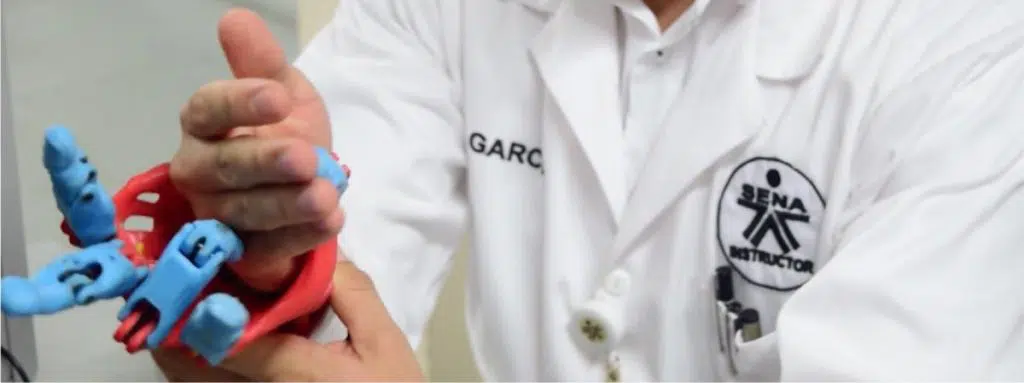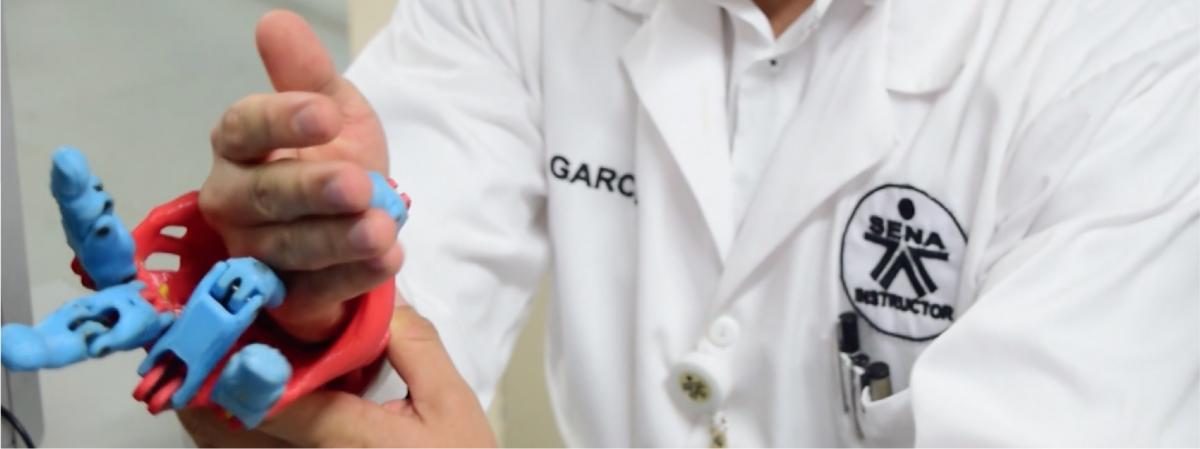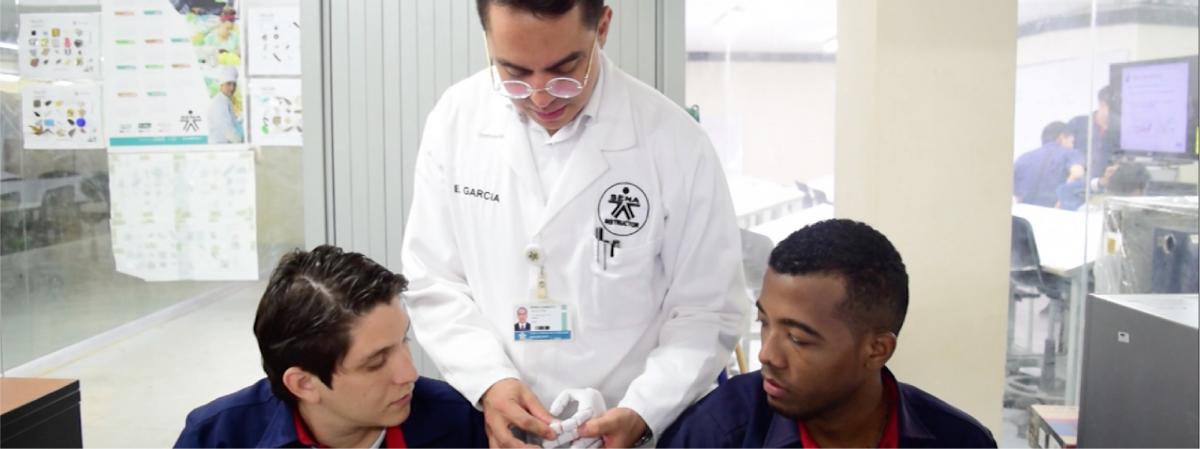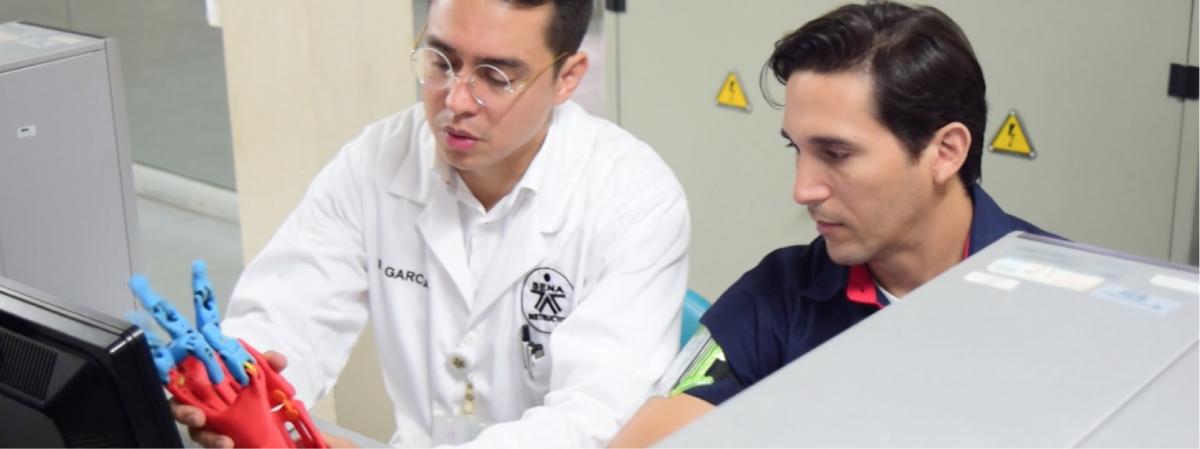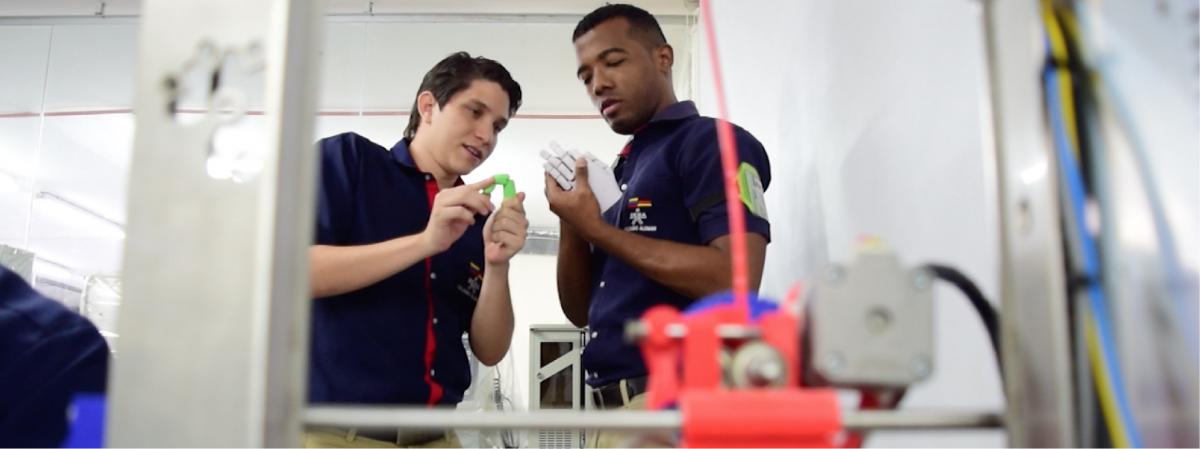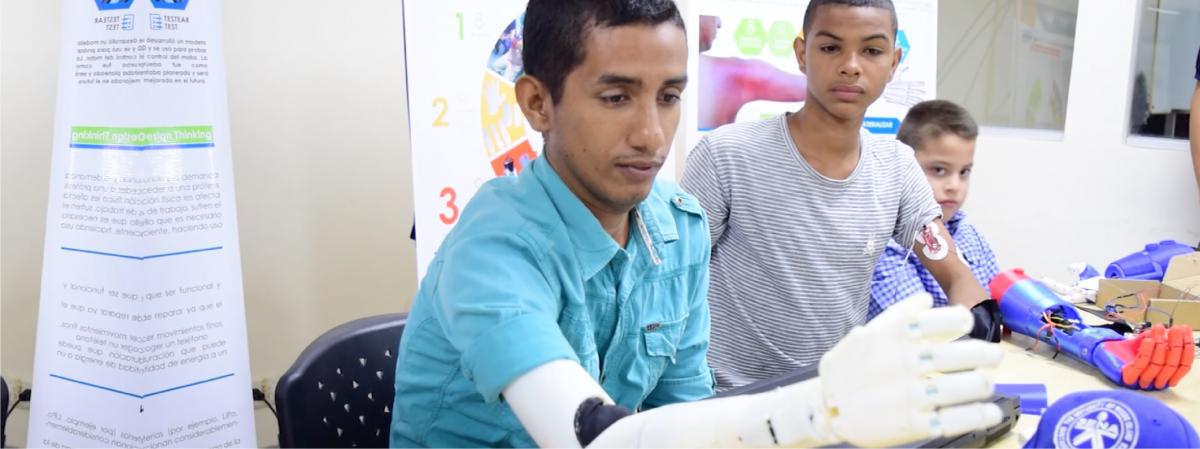Laura Parra, a University of Rhode Island (URI) senior, always wanted to return to her home country of Colombia to give back to the community in some way. Never did she imagine she would be able to fulfill her dream so early in her career and through such an amazing project. This year, the biomedical engineering student participated in a cross-country collaboration between URI and SENA (Servicio Nacional de Aprendizaje) Centro Nacional Colombo Alemán at Barranquilla in Atlántico, Colombia, to invent affordable myoelectric prostheses for amputees in the US and Colombia.
Parra is part of the Spanish International Engineering Program (SIEP), one of URI’s unique five-year programs to earn two bachelor degrees, a bachelor of science in an engineering discipline and a bachelor of arts in a foreign language. A component of these globally focused programs is a full year abroad, with a combined study and internship experience. However, the prostheses project did not fulfill the abroad component, and instead established the groundwork for future student and faculty exchanges that will meet curriculum requirements. Such exchanges are already being scheduled for 2018.
In March 2017, URI’s proposal on “Sustainable Prostheses – An All Inclusive Approach to Designing in the Americas” won a $25,000 grant from 100,000 Strong in the Americas Innovation Fund (100K) in a grant competition promoting study abroad in the fields of engineering, physics, geology, and geophysics, funded by ExxonMobil Corporation and SENA. By then, URI and SENA’s collaboration was already underway.
The two schools paired up their students to form four teams, each designing a prosthetic for a different patient. The teams researched and prepared for their in-person collaboration via virtual communication under the guidance of four instructors, two from each school. Although they struggled with the language barrier, their teamwork and the Colombian students’ jokes formed rapport in their interactions.
In late June 2017, the SENA group traveled to URI to participate in a Designathon for brainstorming patient-focused prosthetic designs. The schools’ mutual exchange of technical and academic methodologies equipped the teams to tackle this ambitious project. The SENA group contributed their methodology of design thinking and participatory design and their expertise in 3D printing with various materials while the URI group brought their knowledge in programming sensors to the table. On July 6, the Designathon concluded with a special presentation at the Schneider Electric campus in West Kingston, RI.
“The event went very well and it was great to present the first accomplishment of the project: The Design of the Prosthetic and the results of the collaborative Designathon and Design-Thinking-Process in an international context,” said Silke Scholz, SIEP director and one of the URI faculty involved in this project. “We decided not to turn this into a competition as each patient’s story and need is equally important.”
Two months later, the URI group made their way to Colombia to synthesize the prosthetic models using SENA’s equipment. The teams were able to personally meet the patients after communicating virtually since the project’s first stage. At the end of the almost three week workshop in Colombia, the teams presented the prosthetic prototypes to the four patients.
URI junior James Gannon, an electrical engineering major, said of his interactions with his team’s seven-year-old patient, “I have a younger brother and sister, so working with [the patient] really hit home.”
For the final stage of the project, one team of students presented their research at the 20th Annual Colloquium on International Engineering Education at Northern Arizona University from November 2 to 3. Gannon and his SENA partner Jairo Orduz represented URI at the colloquium.
“The overall response was very positive because . . . not only was this project collaborative, with students having an important role, but they were part of the activities every step of the way,” Scholz reported. “Presentations are usually given by professors and administrators of programs. It was very interesting for the audience to hear and see the [students’] perspective during our joint presentation.”
This 100K grant helped URI develop SIEP once again, just as a similar grant in 2014 facilitated the establishment of a new partnership with a Chilean academic institution.
“Thank you [Partners of the Americas] for the grant because, without it, we would not have been able to do this project. This was an experience I will never forget,” Parra said. “This project allowed me to get my feet wet since it was my first engineering experience and to see if I really want to specialize in prosthetics.”
